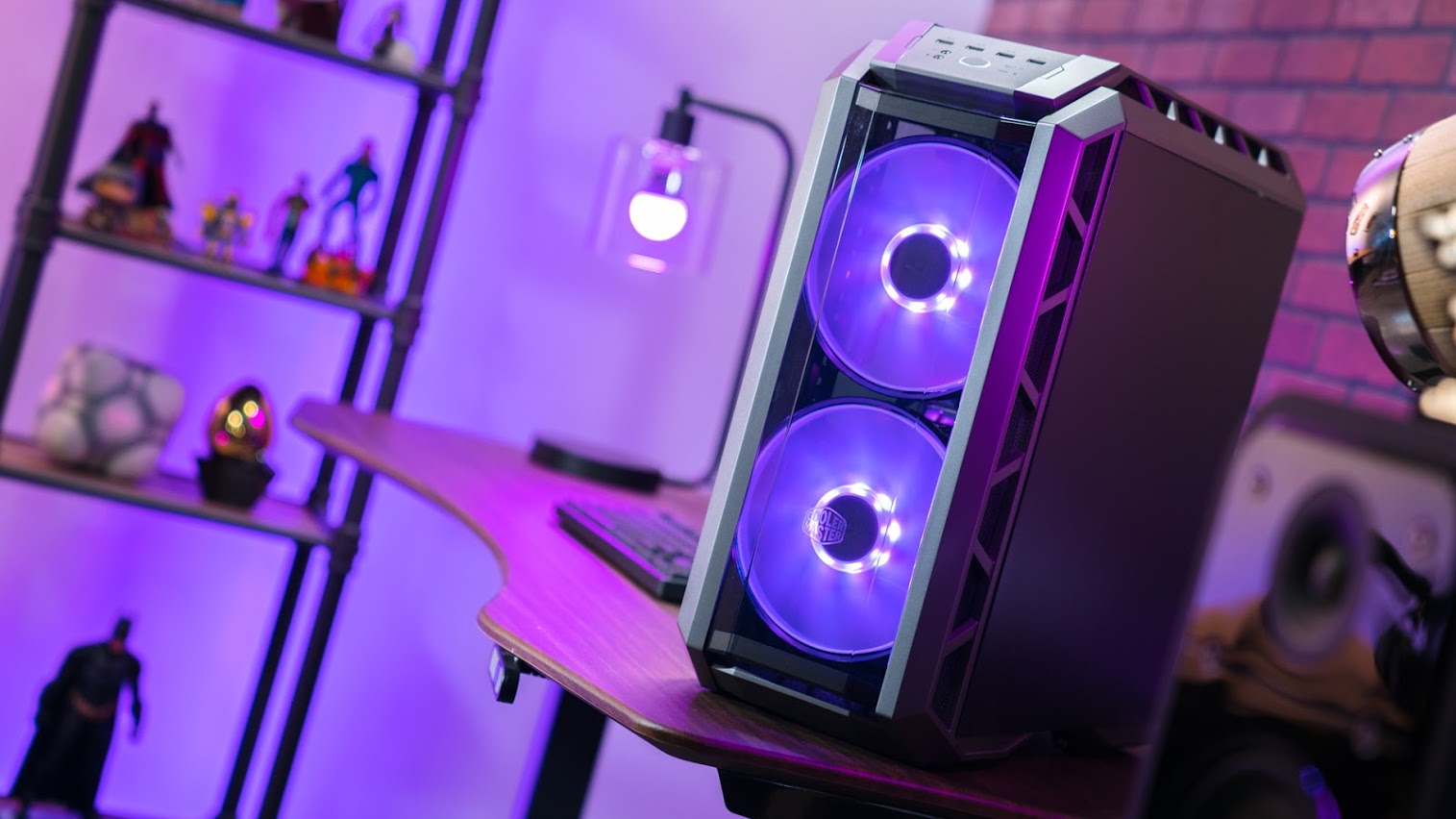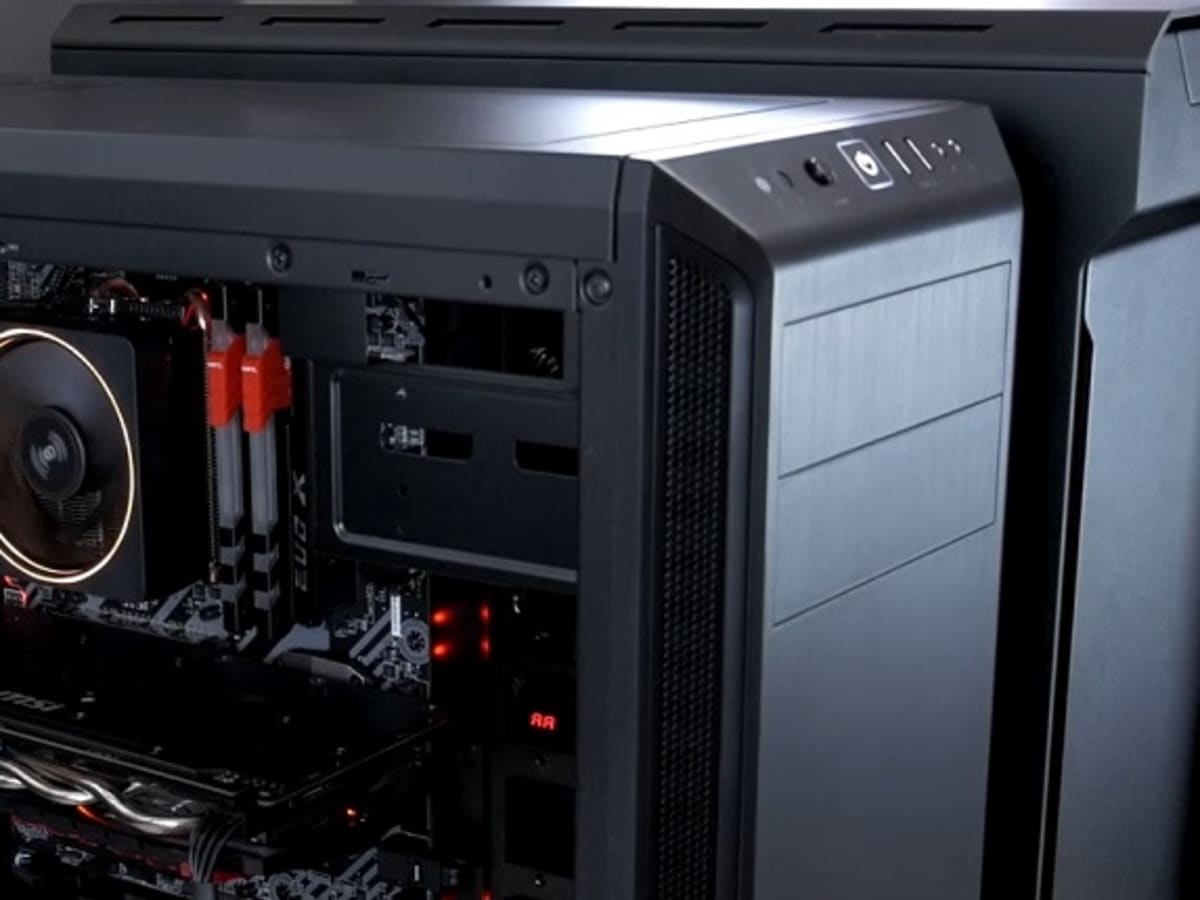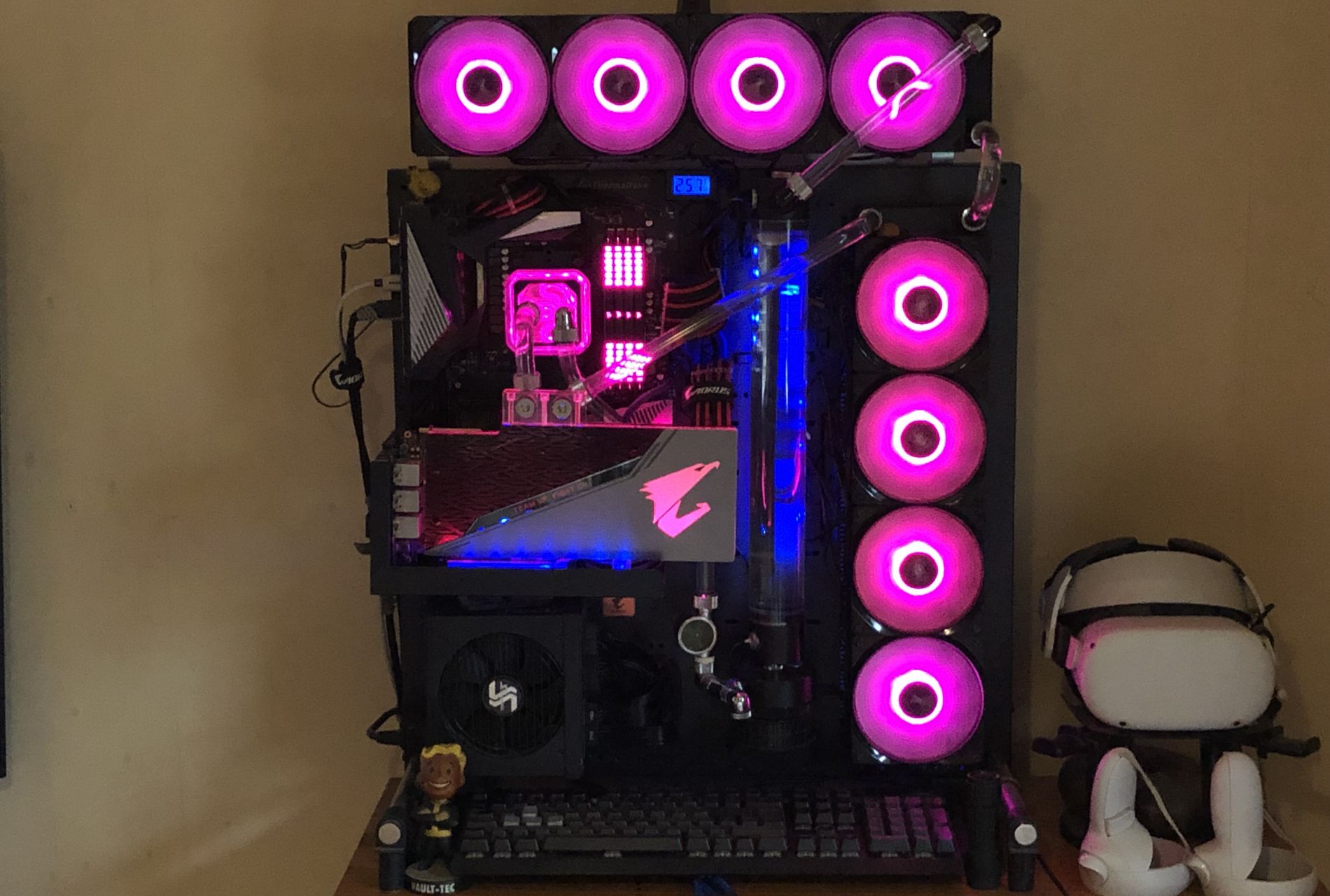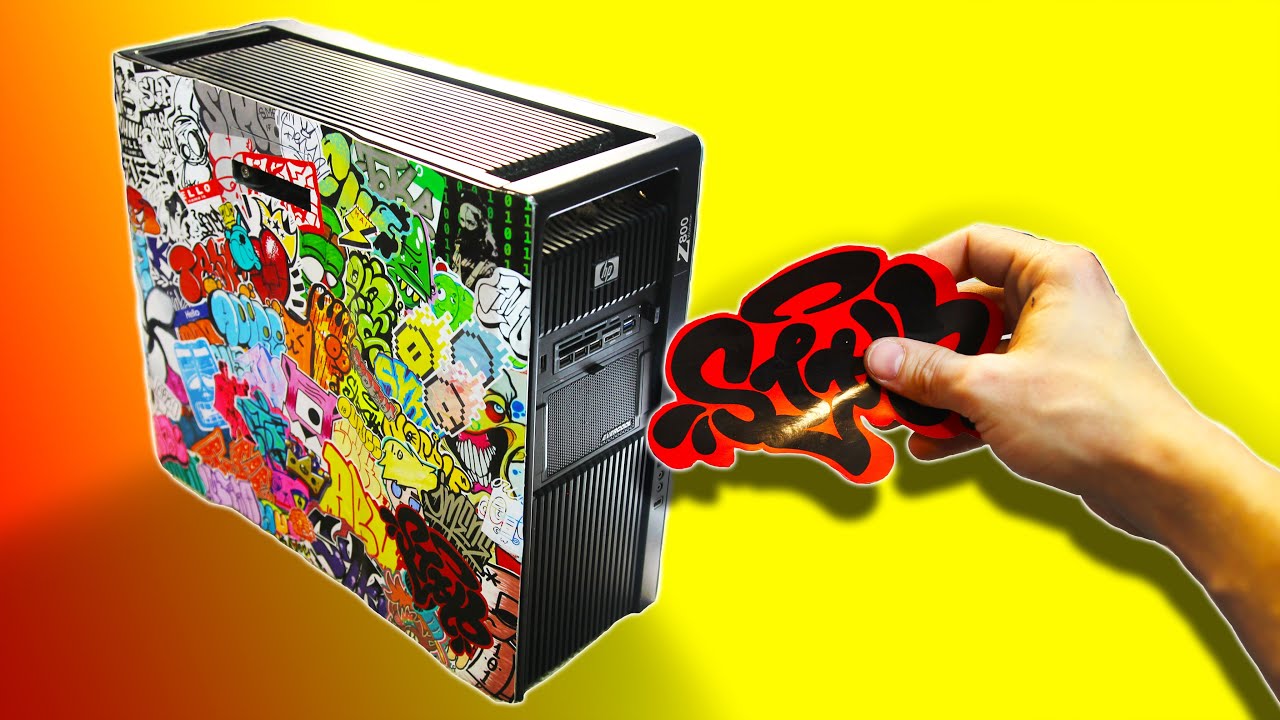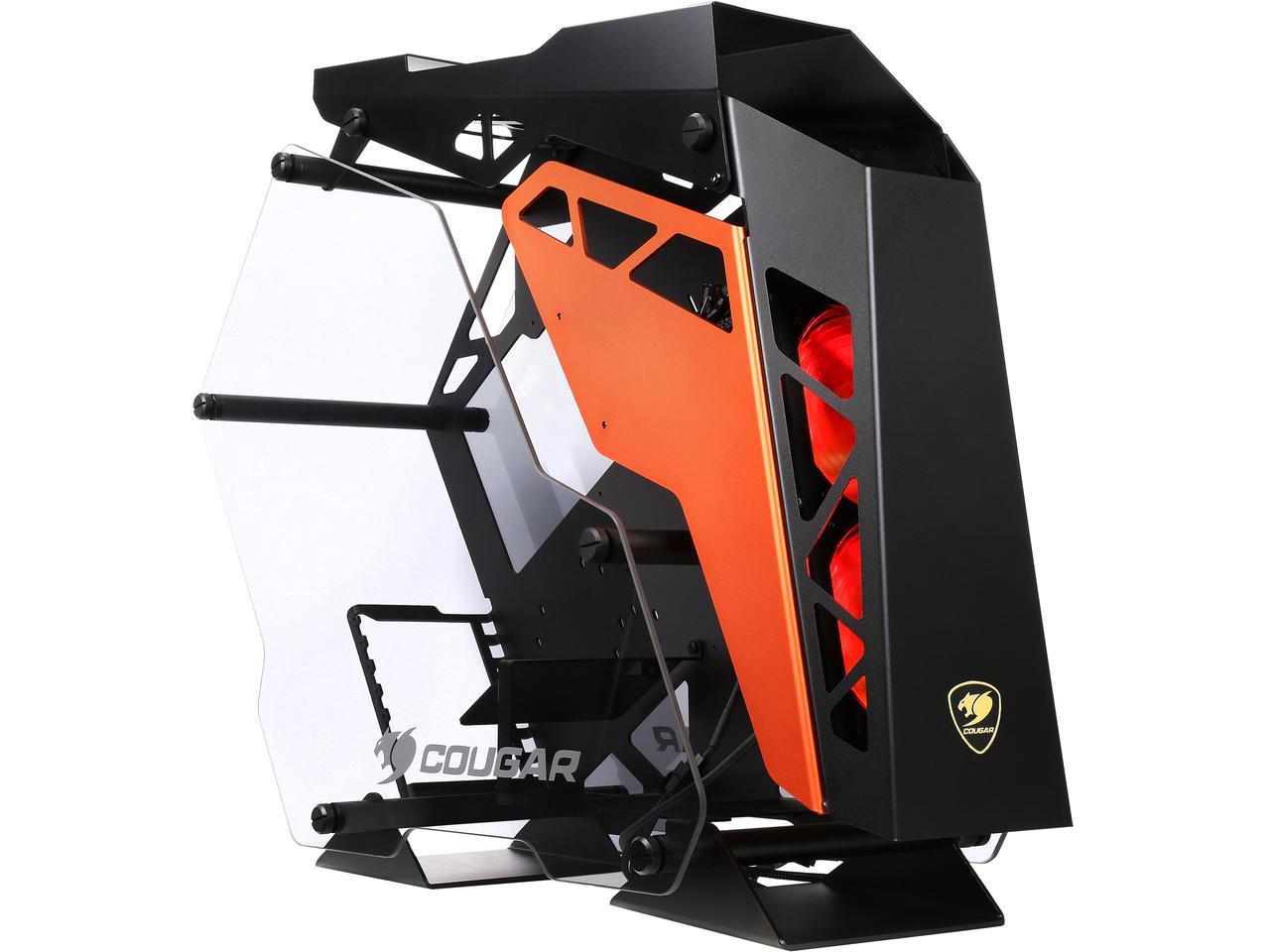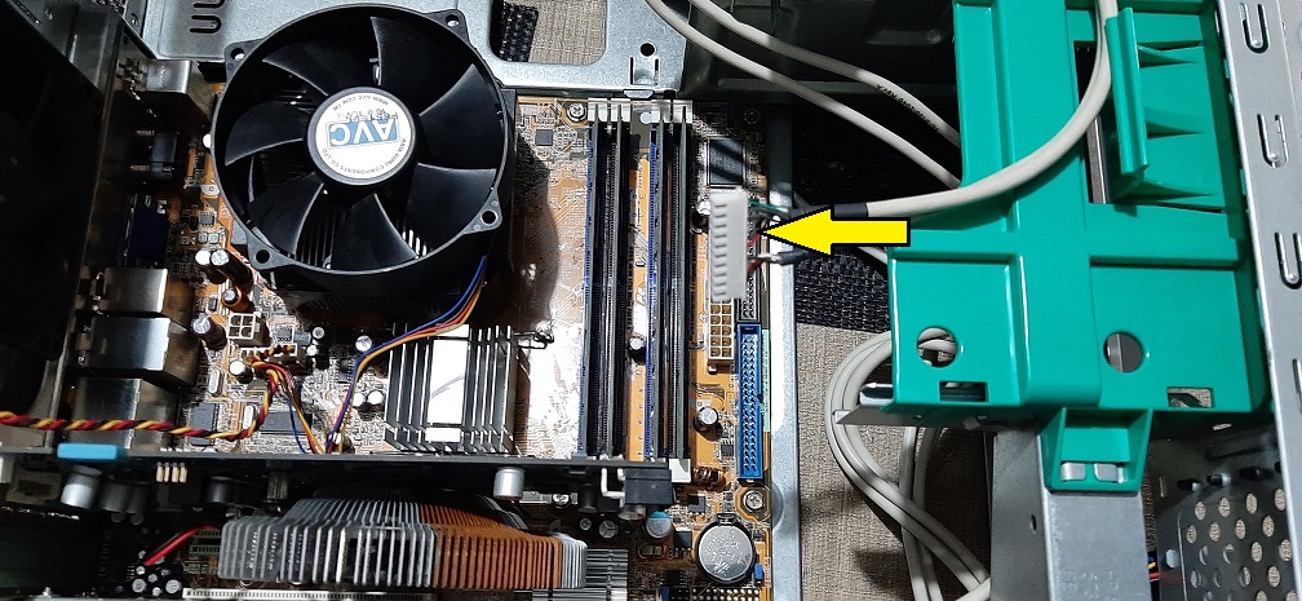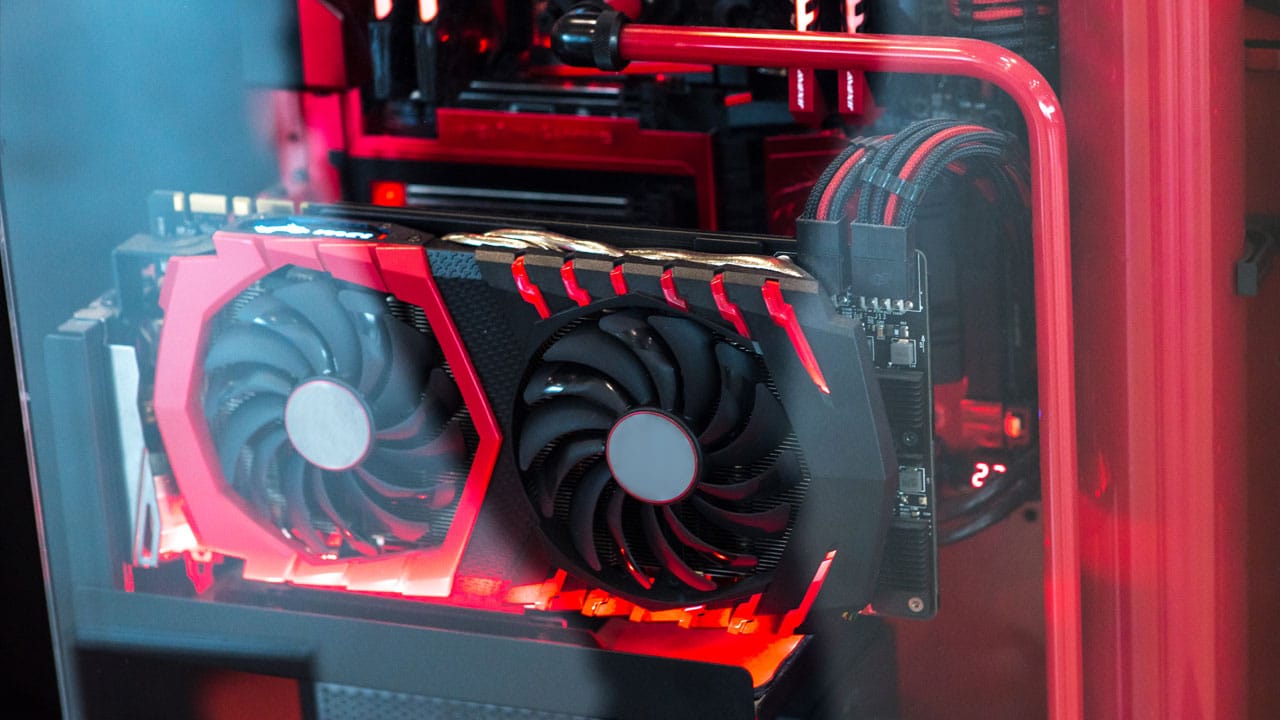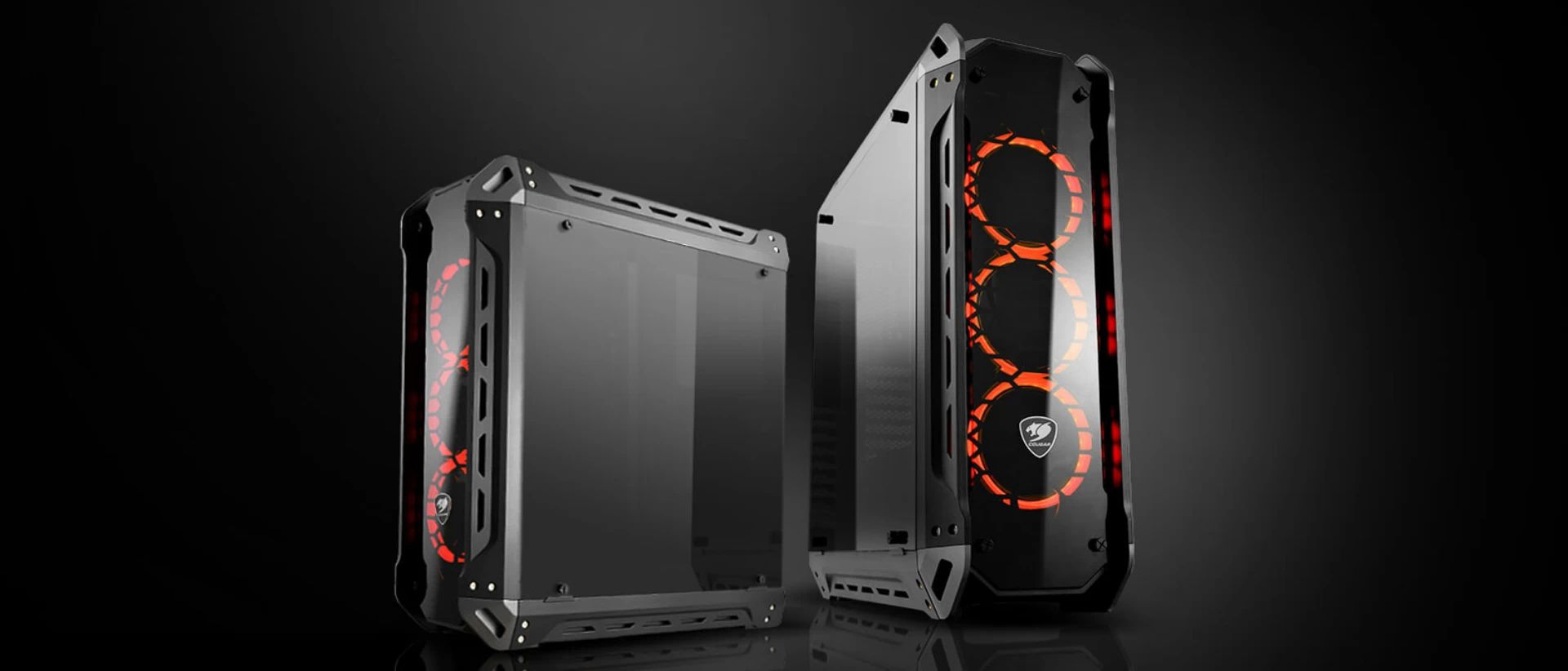Introduction
A PC case, also known as a computer case or chassis, is an essential component that houses and protects all the internal hardware components of a computer. It not only provides structural support but also plays a crucial role in ensuring proper airflow, cooling, and cable management. Choosing the right PC case is important not only for practical reasons but also for aesthetic purposes, as it contributes to the overall look and feel of your system.
With a wide variety of PC cases available in the market today, selecting the perfect one can be a daunting task. Factors such as size, form factor, airflow, cooling, expansion options, and aesthetics all play a role in determining which case is the best fit for your needs. Additionally, considerations such as budget, noise level, compatibility with components, and customizability should also be taken into account.
In this guide, we will explore the key factors to consider when choosing a PC case. By understanding these factors, you will be equipped with the knowledge needed to make an informed decision and find a case that perfectly suits your requirements.
Size and Form Factor
One of the first considerations when choosing a PC case is its size and form factor. The size of the case determines the amount of space available for installing components, while the form factor refers to the specific motherboard size that the case can accommodate.
PC cases come in various sizes, ranging from small form factor (SFF) cases that are compact and portable to mid-tower and full-tower cases that provide ample space for multiple components. Consider the space available in your setup and the number of components you plan to install when choosing the size of the case.
Alongside the size, it’s important to ensure that the case supports the form factor of your chosen motherboard. The most common form factor is ATX, but there are also smaller options like micro-ATX and mini-ITX. Make sure to check the specifications of both the case and motherboard to ensure compatibility.
Choosing the right size and form factor ensures that your components fit perfectly and allows for better airflow and cooling within the case. It also affects the overall aesthetics and functionality of your system, so it’s essential to consider these factors carefully.
Airflow and Cooling
Adequate airflow and efficient cooling are vital for the longevity and performance of your PC components. When choosing a PC case, it’s crucial to consider its airflow design and the cooling options it offers.
Look for a case that has well-placed ventilation holes, mesh panels, or fan mounts to allow for proper airflow. A good airflow design helps in dissipating heat generated by the components, preventing them from overheating. This not only ensures better performance but also extends the lifespan of your hardware.
Additionally, pay attention to the number and size of fan mounts available in the case. Having more fan mounts provides flexibility in configuring a cooling setup that meets your specific needs. Consider the compatibility of the case with various fan sizes, such as 120mm or 140mm, as larger fans tend to move more air with less noise.
Some cases also come with pre-installed fans, while others may require you to purchase them separately. Take into account the overall cooling capacity of the case and the possibility of adding additional fans or liquid cooling components if necessary.
Furthermore, consider the placement of the PSU (power supply unit) and the option for dust filters. A power supply unit located at the bottom of the case with a separate compartment can help in better cable management and improved airflow. Dust filters prevent dust particles from entering the case and clogging up the components, making it easier to maintain a clean and dust-free system.
Ultimately, choosing a PC case with good airflow and cooling capabilities ensures that your components run at optimal temperatures, contributing to system stability and longevity.
Cable Management
Effective cable management is often overlooked but plays a significant role in maintaining a clean and organized PC build. A well-managed cable layout not only improves airflow within the case but also makes future upgrades and maintenance much easier.
When selecting a PC case, consider the availability of cable routing options and hidden cable management features. Look for cases with ample space behind the motherboard tray or dedicated cable management channels to route and hide cables neatly.
Cable tie-down points or Velcro straps can also help secure and organize cables, preventing them from interfering with fans or blocking airflow. Additionally, some cases provide rubber grommets or cable routing holes to guide cables from the back to the front of the case, keeping them organized and out of sight.
Investing time in properly arranging and managing cables not only enhances the visual appeal of your build but also ensures that they don’t obstruct components or impede airflow, leading to better cooling performance.
Consider the number and type of cables you will be dealing with, including power supply cables, SATA cables, and front panel connectors. Selecting a case that offers ample space and cable management options based on your specific requirements will greatly simplify the building process and make future maintenance hassle-free.
Remember, efficient cable management not only improves the aesthetics of your build but also contributes to better airflow, cooling, and overall system functionality.
Expansion and Upgradability
When choosing a PC case, it’s essential to consider the expansion and upgradability options it provides. A case that allows for easy installation and future upgrades can save you time, effort, and money.
Start by checking the number and type of expansion slots available in the case. This includes PCI slots for adding graphics cards, PCIe slots for expansion cards, and drive bays for additional storage drives. Ensure that the case has enough room to accommodate your current components and leaves room for potential future upgrades.
Consider the maximum CPU cooler height and graphics card length that the case can accommodate. This is particularly important if you plan to use large aftermarket coolers or longer graphics cards. Make sure they will fit comfortably within the case without any compatibility issues.
Another factor to consider is the ease of accessing and upgrading components. Look for cases with tool-less drive bays that allow for quick and effortless installation or removal of storage drives. Easy access to components like the CPU, RAM, and expansion slots makes upgrading or swapping parts a breeze.
Additionally, consider the case’s compatibility with future technologies. For example, some cases may come with USB-C ports on the front panel, which can be handy for connecting modern devices. Futureproofing your build by choosing a case with up-to-date and versatile connectivity options is a wise decision to ensure your system can adapt to changing technology needs.
Overall, selecting a PC case with ample expansion slots, sufficient clearance for components, and easy upgradability options helps futureproof your system and allows for seamless upgrades as your computing needs evolve.
Aesthetics and Design
While the functionality of a PC case is crucial, the aesthetics and design should not be overlooked. The visual appeal of your build contributes to the overall experience and can reflect your personal style and preferences.
Consider the design elements of the case, such as the shape, color, and finish. Cases come in various styles, including sleek and minimalist designs, rugged and industrial looks, or even vibrant and eye-catching options. Choose a design that aligns with your taste and complements the overall theme of your setup.
Take into account the visibility of the components within the case. Some cases feature tempered glass side panels that showcase the inner components, adding a touch of sophistication and allowing for an impressive visual display. Others may opt for solid panels that provide a more discrete look.
Pay attention to the placement and design of the front panel. Look for cases with easily accessible USB ports, audio jacks, and other connectivity options that are conveniently located for everyday use.
Additionally, consider any lighting options available in the case. Some cases come with built-in RGB lighting, allowing you to customize the colors and effects to match your taste or synchronize them with other RGB components in your build. Lighting can greatly enhance the aesthetics and create an immersive visual experience.
Remember that the aesthetics and design of your PC case are subjective and unique to your personal preference. Choose a case that not only meets your functional needs but also reflects your style and enhances the overall visual appeal of your build.
Drive Bays and Storage Options
When selecting a PC case, the drive bays and storage options available should be considered, especially if you require ample storage space or plan to expand your storage capacity in the future.
Start by evaluating the number and type of drive bays the case offers. Most cases will have a combination of 3.5-inch and 2.5-inch drive bays. The 3.5-inch bays are typically used for traditional mechanical hard drives, while the 2.5-inch bays are used for solid-state drives (SSDs).
If you have a large media library or need extensive storage, consider a case that provides multiple drive bays or even hot-swappable options. The ability to swap out drives without powering down the system can be incredibly convenient for those who regularly work with multiple drives or need easy access for backups or data transfers.
Additionally, check if the case offers any specialized storage options, such as dedicated SSD mounting points on the back of the motherboard tray or SSD brackets that can be mounted to eliminate the need for drive bays. These options can help save space and provide a cleaner overall appearance for your build.
Consider the flexibility of storage options as well. Look for cases that allow for tool-less installation or easy drive sleds for quick and hassle-free drive installation or removal.
Lastly, if you plan to use large graphics cards that occupy multiple expansion slots, ensure that the case provides enough clearance and does not restrict access to drive bays or interfere with the installation of storage devices.
By selecting a case with adequate drive bays and storage options, you can ensure that you have enough room for your storage needs and have the flexibility to expand or upgrade your storage setup in the future.
Front Panel Connectivity
Front panel connectivity plays a crucial role in the convenience and accessibility of your PC. When choosing a PC case, it’s important to consider the front panel connectivity options that are available.
Start by identifying the essential connectivity ports that you use frequently. Common front panel connectors include USB ports, audio jacks (for headphones and microphones), and SD card readers.
Consider the number and type of USB ports available on the front panel. USB 3.0 and USB 3.1 ports provide faster data transfer speeds compared to older USB 2.0 ports. Having a sufficient number of USB ports ensures that you can connect various devices, such as external hard drives, gaming controllers, or USB flash drives, without the need for additional adapters or hubs.
Audio jacks on the front panel are particularly convenient for quick access to headphones or microphones. This is especially useful for gamers, content creators, or anyone who frequently uses audio peripherals.
If you regularly use SD cards for data transfer or media storage, look for a case that includes an SD card reader on the front panel. Having this option readily available saves you the hassle of connecting a separate card reader or accessing the back of the case.
Consider the placement and arrangement of the front panel connectors as well. Ensure they are easily accessible and not obstructed by other components or case designs. The organization and placement of the connectors contribute to the overall usability and convenience of your PC.
Last but not least, evaluate the quality and durability of the front panel connectors. Check if they are securely attached and resistant to accidental damage or wear over time.
By choosing a case with well-designed and conveniently placed front panel connectivity options, you can enhance the ease of use and accessibility of your PC, making it more convenient to connect and interact with your favorite peripherals.
Cost and Budget
Cost is an important factor to consider when choosing a PC case, as it can significantly impact your budget and overall build costs. It’s essential to set a realistic budget and find a case that offers the best value for your money.
PC cases come in a wide range of prices, from budget-friendly options to high-end cases with premium features. The cost will depend on factors such as the brand, size, materials used, additional features, and aesthetics.
Before starting your search, determine your budget and prioritize the features that are most important to you. Remember that a higher price doesn’t always guarantee the best performance or quality, so it’s important to do thorough research and compare options within your price range.
Consider the long-term investment when it comes to your PC case. A well-made and durable case can last through multiple system upgrades, saving you money in the long run. However, if you plan to upgrade frequently or change your build aesthetic regularly, you may opt for a more budget-friendly option.
Keep in mind that while cost is a crucial aspect, it should not be the sole determining factor. Look for a case that aligns with your budget and provides the necessary features and functionality you require, without compromising on quality or essential elements.
Additionally, keep an eye out for sales or discounts, as PC cases are often included in seasonal or promotional offers. This can allow you to get a high-quality case at a more affordable price point.
Ultimately, balancing cost and budget allows you to select a PC case that meets your needs and provides the best value for your money. Finding the right balance ensures you get a case that fits your budget while still delivering the desired features and functionality.
Noise Level
The noise level of a PC case is an important consideration, especially if you value a quiet and peaceful computing environment. No one wants a system that sounds like a jet engine taking off while trying to work or enjoy multimedia content.
When selecting a PC case, consider the noise-reducing features it offers. Look for cases that include sound-dampening materials such as foam padding or soundproofing coatings on the side panels. These materials help absorb and reduce noise generated by the internal components.
Pay attention to the fan mounting options and the compatibility of the case with low-noise or ultra-quiet fans. High-quality, low-noise fans can significantly decrease the overall noise level of your system while still providing adequate airflow and cooling.
Another factor to consider is the placement of the case fans and the design of the case for efficient airflow. A well-designed case with optimized airflow can help minimize the need for fans to run at higher speeds, which in turn reduces noise.
Additionally, check if the case offers fan speed control options. Some cases have built-in fan controllers or support for PWM (Pulse Width Modulation) fans that can adjust fan speeds based on temperature, allowing for quieter operation when the system is not under heavy load.
If silence is a high priority for you, consider looking into specialized silent PC cases. These cases are specially designed to minimize noise generation, with features such as soundproofing, vibration dampening, and specialized fan configurations.
While it’s difficult to completely eliminate all noise, choosing a case with noise-reducing features and taking steps to optimize airflow and fan control can significantly reduce overall system noise, creating a more peaceful and enjoyable PC experience.
Compatibility with Components
Ensuring compatibility between your chosen components and the PC case is crucial to building a functional and efficient system. When selecting a PC case, it’s important to consider its compatibility with various components such as the motherboard, graphics card, CPU cooler, and power supply.
Start by verifying the form factor compatibility between the case and the motherboard. The most common form factors are ATX, micro-ATX, and mini-ITX. Ensure that the case supports the form factor of your chosen motherboard to ensure a proper fit and alignment of connectors.
Consider the length and clearance for the graphics card. Some high-performance graphics cards can be quite lengthy, and it’s important to choose a case that can accommodate their size. Verify the maximum supported graphics card length in the case specifications to avoid any compatibility issues.
Check the CPU cooler clearance as well. If you plan to use a large aftermarket CPU cooler, ensure that the case provides enough clearance in terms of height and width to accommodate the cooler without any interference or restriction.
Power supply compatibility is another important factor. Most cases support standard ATX power supplies, but some smaller cases may require specialized SFX or TFX power supplies. Ensure that the case has the necessary mounting options and supports the power supply form factor you plan to use.
Furthermore, consider the number and size of drive bays or storage options available in the case. Ensure that the case provides enough room and compatibility for your desired storage configuration, whether it’s traditional hard drives, SSDs, or a combination of both.
Lastly, check for any additional compatibility requirements based on your specific build. This may include connector types and placement for front panel audio, USB headers, and other components or accessories.
By ensuring compatibility between the case and your components, you can avoid potential issues and ensure a smooth and successful system build. Thoroughly reviewing the case specifications and comparing them to your chosen components’ requirements is crucial to ensure a harmonious and compatible system configuration.
Material and Durability
The material and durability of a PC case are important factors to consider when making your selection. The choice of material affects both the overall quality and longevity of the case.
PC cases are commonly made from materials such as steel, aluminum, or a combination of both. Steel cases provide sturdy construction and durability, making them a popular choice for those seeking solid build quality. Steel cases are generally more resistant to dents and scratches.
Aluminum cases, on the other hand, offer a lightweight and sleek design. They are known for their excellent heat dissipation properties and corrosion resistance. Aluminum cases are often more expensive, but they provide a premium feel and are popular among users who value aesthetics and portability.
Another factor to consider is the thickness of the panels. Thicker panels generally offer better noise insulation and reduction, but they may also add weight to the case. Thinner panels may lead to more vibration or noise, but they can contribute to a lighter overall system.
Some cases also utilize tempered glass or acrylic side panels. These transparent panels provide a clear view of the internal components and add a touch of elegance to the overall look of the system. However, they may be more prone to scratches and are not as impact-resistant as solid metal panels.
When choosing a PC case, consider your personal needs and preferences regarding material and durability. If you prioritize sturdiness and long-term durability, a steel case might be the better choice. If you prefer a lightweight and visually appealing option, an aluminum case could be more suitable.
Furthermore, consider the overall build quality and attention to detail in the case’s construction. Look for features such as reinforced corners, solid hinges, and securely designed front panels to ensure a robust and durable case.
Ultimately, selecting a PC case made from high-quality materials and designed with durability in mind ensures that your investment lasts for years to come, providing protection for your components and contributing to the overall longevity of your system.
Customization and Modularity
Customization and modularity are key factors to consider when choosing a PC case, especially if you have specific needs or preferences for your build. A case that offers customization options and modularity allows you to tailor your system to your exact specifications and easily adjust it as your needs change over time.
Look for cases that provide ample space and flexibility for adding or removing components. This includes features such as removable drive cages, modular HDD bays, or adjustable mounting points for fans and radiators. These options make it easier to reconfigure your system or accommodate different setups based on your specific requirements.
Consider the ability to add or remove fan mounts or radiator brackets. This allows you to configure your system for optimal cooling performance or accommodate different cooling solutions, such as air cooling or liquid cooling, depending on your preferences.
Pay attention to the cable management capabilities of the case. Look for features such as multiple cable routing options, tie-down points, or dedicated cable management chambers. These features help in achieving a clean and organized build while allowing for easy customization and future upgrades.
Additionally, check for customizable aesthetics options in the case. This can include features such as interchangeable front panels, customizable LEDs or RGB lighting, or the ability to showcase or hide certain components with easily removable or adjustable panels. Customizable aesthetics give you the opportunity to personalize your build and create a unique system that reflects your style and personality.
Modularity also extends to compatibility with various accessories and components. Look for cases that support additional accessories such as vertical GPU mounts, additional fan brackets, or specialized brackets for mounting external storage devices or liquid cooling reservoirs.
By choosing a case that offers customization and modularity, you have the freedom to design and transform your system to meet your specific preferences and needs. Whether you prefer a clean and minimalist build or a showcase of unique aesthetics, a customizable and modular case is an ideal choice for achieving your desired outcome.
Brand Reputation and Customer Support
When choosing a PC case, considering the brand reputation and customer support is essential. Opting for a reputable brand ensures that you are investing in a quality product and have access to reliable customer service if needed.
Reputable brands have a track record of delivering well-designed and durable cases that meet the needs of their customers. They often have a loyal following and positive feedback from users who have experienced their products firsthand.
Research customer reviews and ratings for the brand and specific models you are considering. This can provide valuable insights into the overall customer experience, build quality, and any potential issues or concerns to be aware of.
Support from the manufacturer is also important, especially if you encounter any issues during the build process or have questions or concerns. Reputable brands typically offer reliable customer support, whether it’s through detailed documentation, online resources, or direct contact with their support team. A responsive and knowledgeable customer support team can be invaluable in troubleshooting and resolving any issues that may arise.
Consider the warranty and return policy offered by the brand. A generous warranty period demonstrates the brand’s confidence in their product’s quality and provides assurance that they will stand behind their product in case of any manufacturing defects or issues. Additionally, a user-friendly return policy can give you peace of mind, allowing you to return or exchange the case if it doesn’t meet your expectations or requirements.
Research forums and online communities to see what other users have experienced with the brand and their customer support. This can provide insight into the level of responsiveness and assistance they provide to their customers.
Ultimately, choosing a PC case from a reputable brand with good customer support ensures that you are investing in a quality product and have access to the assistance you need throughout the process. It gives you peace of mind and the confidence that your chosen case is backed by a reliable manufacturer dedicated to customer satisfaction.
Conclusion
Choosing the right PC case is a crucial decision that directly impacts the functionality, aesthetics, and overall experience of your computer system. By considering the factors discussed in this guide, you can make an informed decision and find a case that perfectly suits your needs.
Start by assessing the size and form factor requirements of your build, ensuring compatibility with your chosen components. Consider the airflow and cooling options the case offers, ensuring efficient heat dissipation and maintaining optimal operating temperatures.
Pay attention to cable management features and options for easy organization and future upgrades. Consider the expansion and upgradability options, allowing flexibility as your computing needs evolve over time.
Aesthetics and design should not be overlooked, as they contribute to the visual appeal and personalization of your build. Additionally, consider the drive bays and storage options available to accommodate your storage needs.
Front panel connectivity, noise level, and material durability are also important factors to consider when choosing a PC case. Lastly, factor in the customization and modularity options along with the reputation of the brand and availability of customer support.
By carefully evaluating these factors, you can find a PC case that meets your requirements, fits within your budget, and enhances the overall performance and appeal of your computer system.
Remember, selecting the perfect PC case is a personal choice, and it’s important to assess your specific needs and preferences. With the right case, you can build a system that not only performs at its best but also reflects your unique style and personality.







